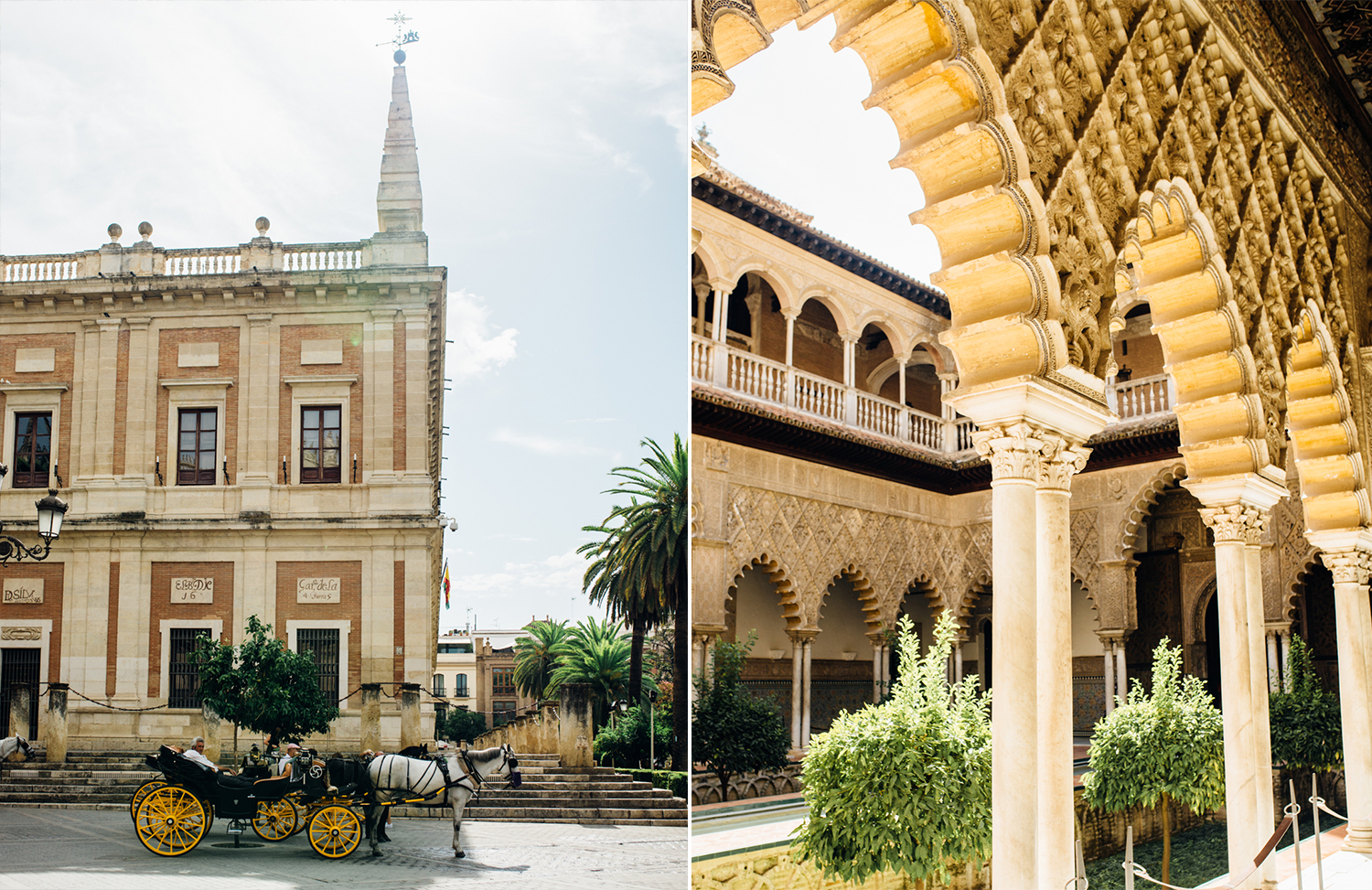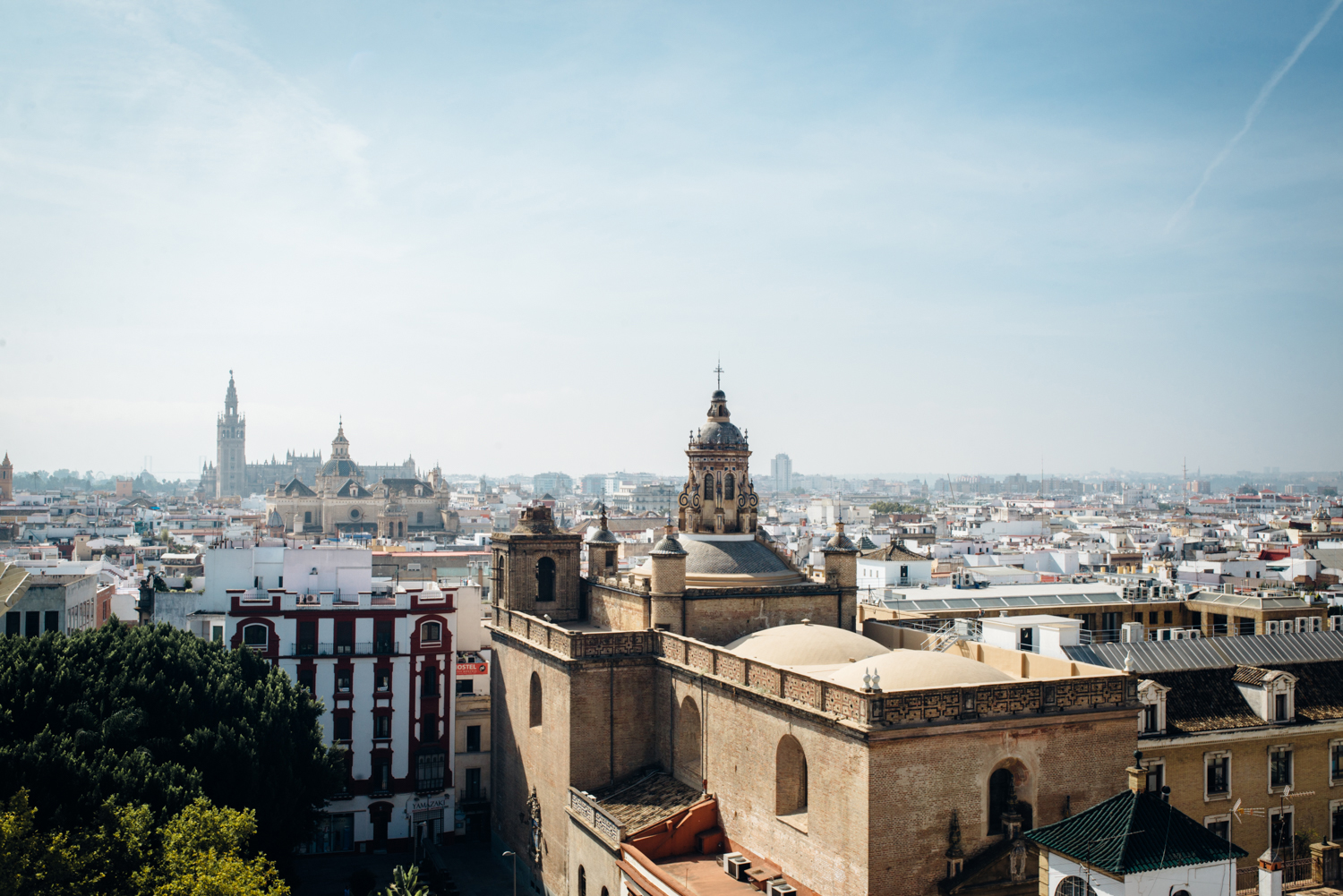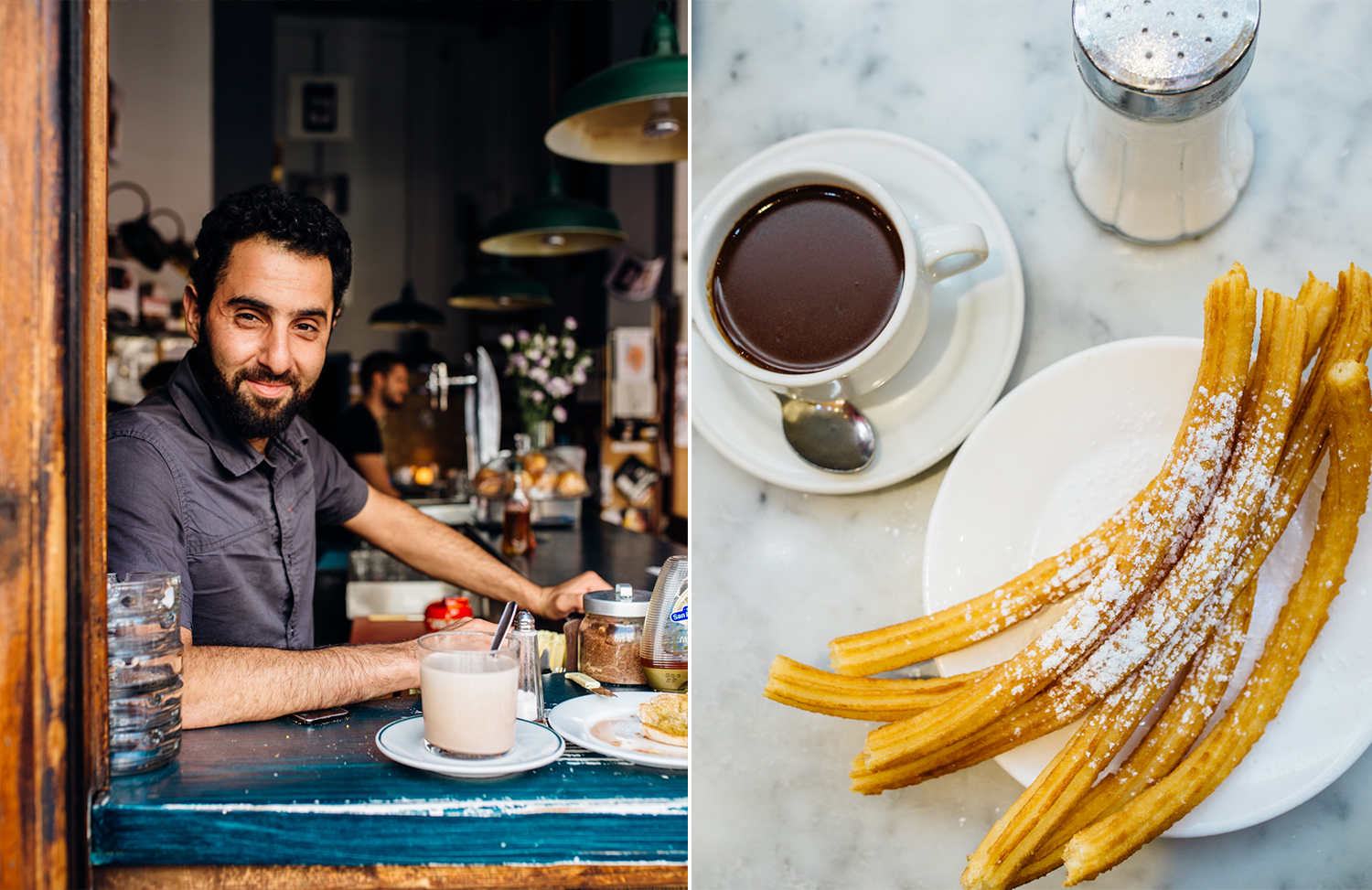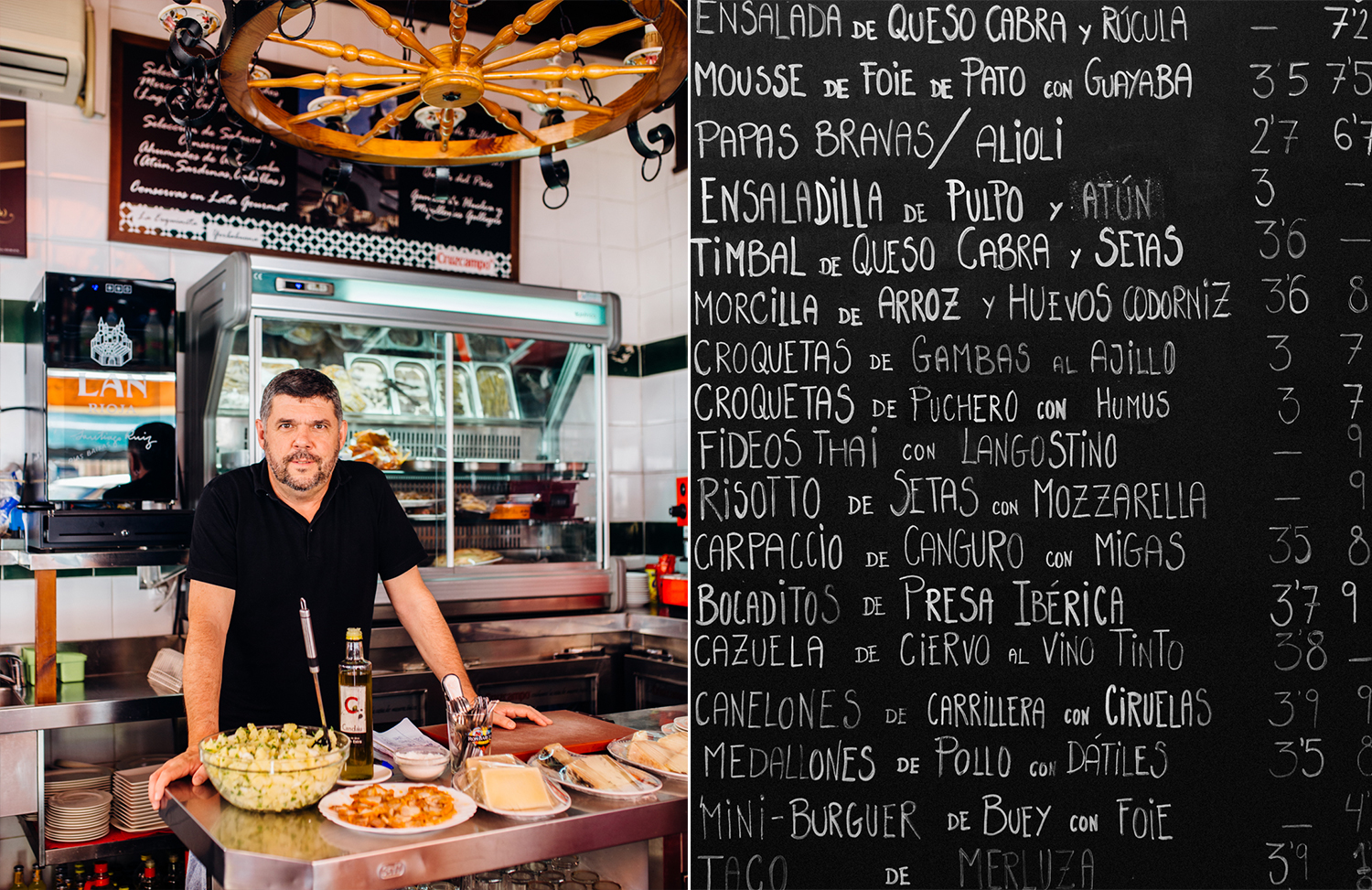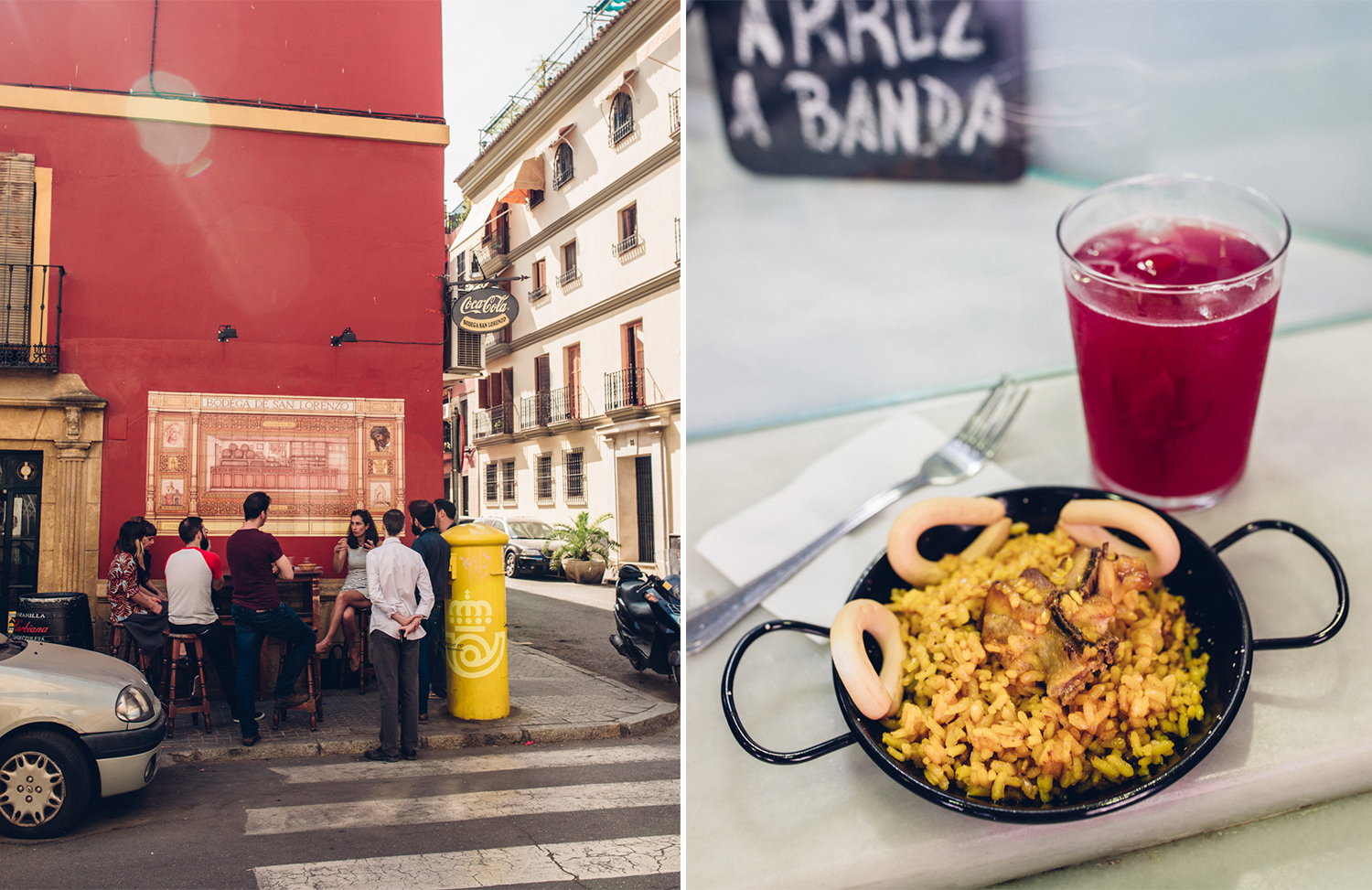The Perfect Weekend in Seville, Spain
Nestled in the hot arid countryside of southern Spain, Seville is a city that packs a punch. The capital of the Andalucía province manages to feel small but live large, due in large part to the historical mix of cultures and architecture and the locals’ strong adherence to traditions. If Madrid is the hulking metropolis filled with endless neighborhoods and museums, and Barcelona the international artsy cousin, Seville feels like the Spain you’ve been imagining: This is the Spain of flamenco and bullfights, tapas and Catholic churches. The locals are fiery, the lunches long (the siestas even longer), and there is rarely a rainy day to be had.
The city sees the most visitors in the spring when the weather is not yet scorching, the sweet scent of hundreds of orange blossoms fills the air, and the most famous holiday celebrations take over: Semana Santa and La Feria. Seville’s Easter week celebrations, or Semana Santa, are known the world over and have been practiced for centuries. Thousands of people take to the streets to watch elaborately decorated floats carried in processions from the small neighborhood churches to the main cathedral. While the mood is somber and emotional during Semana Santa, the city livens up a few weeks later, at the beginning of May, for La Feria. Hundreds of tents are set up at the city’s edge where Sevillian families will spend the week eating, drinking, and dancing all while dressed in colorful, traditional Andalusian attire. While these holidays make for a unique Spanish experience, they are truly held for the locals and it can be difficult to participate as a tourist. To avoid the crowds and excessive heat, a visit in early fall is ideal.
As a visitor, it is hard not to fall in love with Seville. It has a rich and long history, with each ruling group leaving behind its trace on the culture and architecture of this colonial gem. It served as an important city to the Romans and was later ruled by the Arabs for 700 years until they were overthrown by Spanish Christians. It became one of the wealthiest cities in the world in the 16th century when Christopher Columbus discovered America and Seville was made the center of trade relations with the New World. Roman, Moorish, Gothic, Renaissance, Baroque, and Roccoco styles mix beautifully and allow for endless sightseeing. It is easy to experience the culture as well as life is led in the streets (Sevillians rarely entertain in the house): Old señoras walk hand-in-hand through the alleys, teenagers and foreign college students drink outside in the plazas, and children accompany their parents for tapas until late in the night. Here’s the best way to make like a Spaniard and enjoy a weekend of tapas, wine, and good company:
DAY 1:
Start your day off right with a breakfast of churros y chocolate: fried dough sticks sprinkled in sugar and dipped in hot chocolate as thick as pudding. Join the locals at the corner bar on most any plaza, such as the popular La Centuría in Plaza Encarnación. Start the sightseeing early (before the long lines and mid-day sun) at the Moorish palace El Alcázar. Most of the Iberian Peninsula was ruled by the Moors for 700 years, with Seville serving as an important hub. Much of the architecture of the city still reflects these Islamic roots, from the Torre del Oro, a watchtower sitting on the bank of the Guadalquivir river leftover from the Moorish walls that enclosed the city, to the Casa de Pilatos, a private palace built in a mix of Italian Renaissance and Spanish Moorish styles. But it’s the stunning El Alcázar that is truly the gem of Moorish architecture. Dizzying tile mosaics and plasterwork as delicate as lace showcase the beauty of Islamic design. If you are visiting in the summer, the palace hosts an open-air concert series at night in the surrounding gardens that makes for a magical experience.
It is a crime to come to Seville and not see some flamenco. Developed around 200 years ago, flamenco is a style of music – a single soulful singer accompanied by guitar, clapping, and stomping – and dance – with tap-dance style footwork and intricate hand movements. It is the fusion of traditions from the Moors, Jews, and gypsies living in Andalusia and has continued to evolve over the centuries. It remains a very important part of the culture in Seville that, along with neighboring Cadiz and Jerez, serves as a major hub of flamenco. While there will be plenty of tourists (and locals!), La Carboneria promises a passionate performance in a lively atmosphere. The rustic covered terrace with long picnic tables fills up quickly for the free performance at 10:30 p.m. by local talent in traditional dress. For more spontaneous flamenco, check out the bars in the Triana neighborhood – La Taberna is a favorite - where locals put on an impromptu performance and the whole bar claps along.
Day 2:
Head back to the city center to the massive Seville Cathedral, an ode to Gothic architecture not to be missed. Filled with floor to ceiling ornate gold décor, it holds the tomb of Christopher Columbus and gives you access to climb the Moorish tower La Giralda for full city views.
If you’re feeling adventurous and happen to be visiting Seville between April and October, you could score tickets to a bullfight. While the controversy surrounding bullfighting has grown in Spain as well - and it is not for the faint of heart – it is nevertheless a part of Spanish culture and deserves a mention. Seville has along tradition of bullfighting, and its ring, La Maestranza, is one of the most beautiful in the country. Locals come to watch the best toreros showcase their skills, so be sure to book tickets way in advance.
In the Arenal neighborhood behind the bullfighting ring you will find Calle Gamazo, a street with some of the oldest bars in the city, serving classic tapas in traditional décor. Tapas dominate the restaurant scene in Seville, and there is no shortage of bars to choose from as every street corner has a hole-in-the-wall serving the bite-sized snacks. La Eslava, off of the Plaza de San Lorenzo, has award-winning tapas with a more contemporary feel.
Day 3:
Step away from the touristy city center and spend the day wandering around the twisting alleys of the Macarena district to see how the locals live. Neighborhood bars, corner bodegas, and cobblestone streets offer up picturesque vistas at every turn. Be sure to pop into the small churches along the way – their unassuming exterior belies the ornate interior filled with Catholic iconography, gilded altars, and the floats used during Semana Santa.
When you get hungry, join the locals for lunch at the nearby Mercado de Feria, an open air market selling fruits, veggies, and fresh fish. The beautifully renovated warehouse also has a bar and stalls selling everything from paella to sushi to Tex-Mex after 1:30pm everyday. Pick up a drink and tapa combo for just 3.50euro.
An evening stroll and drink at an outdoor terrace is a must when in Spain. There is no better way to beat the heat than to order a Tinto de Verano. A lighter version of sangria, this unlikely mix of red table wine and lemon-lime soda makes for a surprisingly refreshing beverage. Head to La Alameda where you will find back-to-back bars and a lively bohemian crowd in the plaza, or to Calle Betis for drinks along the river.
[Originally published in PALM Magazine]

